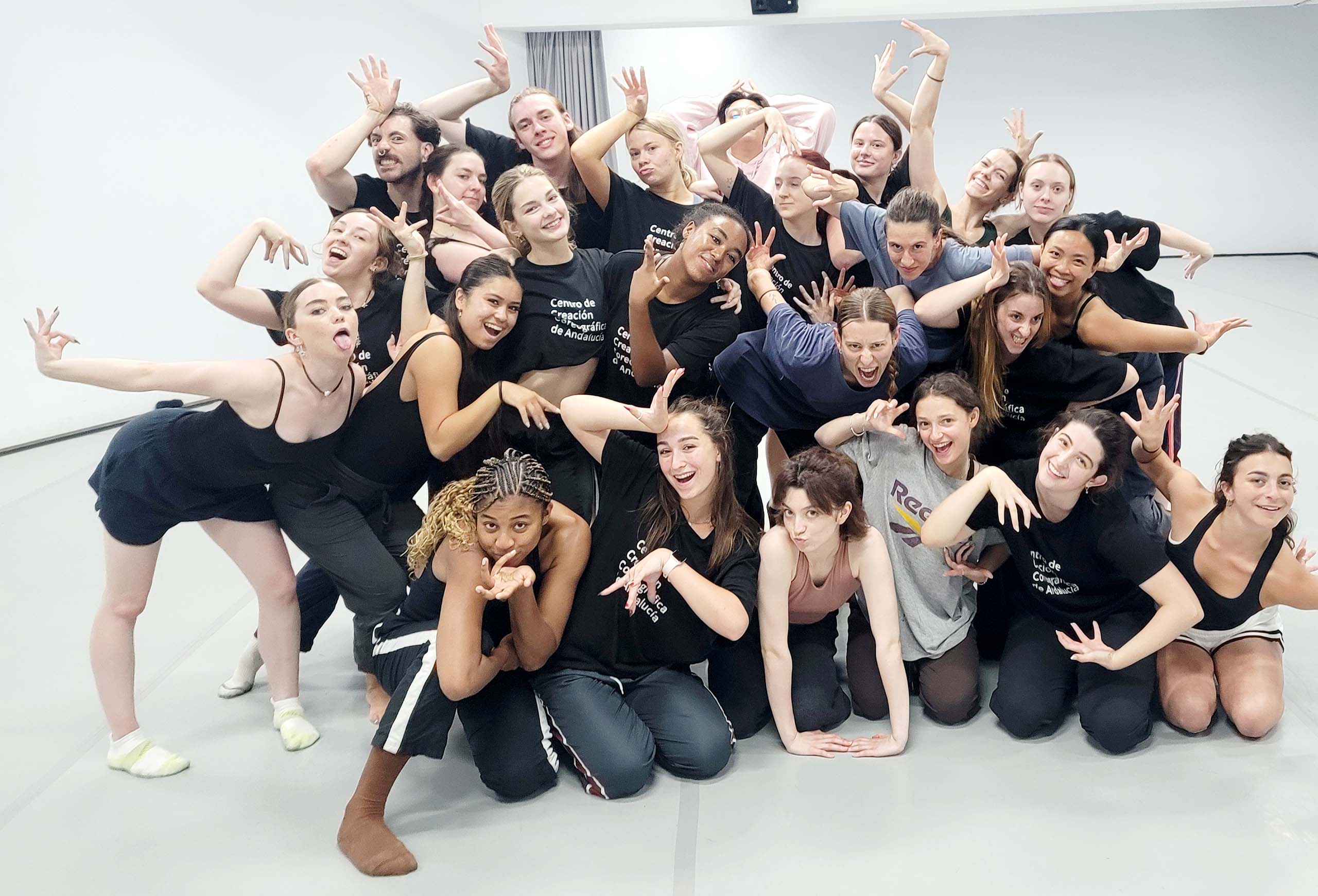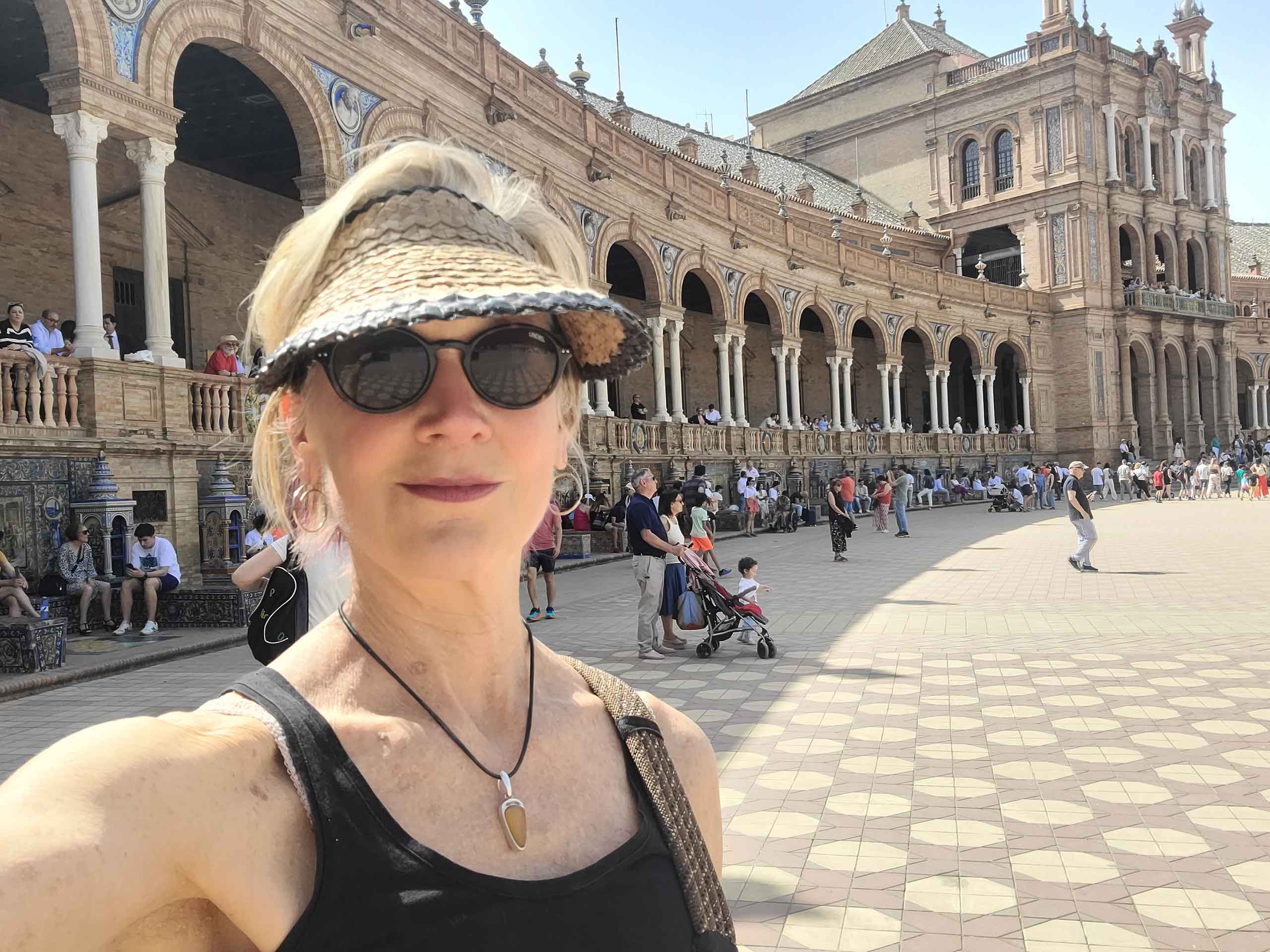Nineteen students from the Department of Dance traveled to Seville, Spain, on May 19, 2024, for a two-week dance intensive with Marcat Dance at the Centro de Creación Coreografica de Andalucía. Anchoring the immersive experience were daily classes in the Marcat technique with Mario Bermúdez Gil and Catherine Coury (BFA ’10, dance), co-founders of Marcat Dance, which is based in Vilches, Spain. The BFA dance students were joined by six early-career dancers from the Andalusia region and Madrid. Marcat company dancer Allesia Sinato joined the workshop to teach repertory, and Professor Amy Chavasse led composition and improvisation classes throughout the program. Working with Professor Christi-Anne Castro and the global engagement team, Chavasse is thrilled that this initiative continues to thrive, creating an exceptional experience for BFA dance students.
This summer program featured an abundance of exceptional dance, cultural, and historical experiences for the SMTD dance students. During the first week, Compañia David Coria gave public performances in Seville of Los Bailes Robados, which employs contemporary interpretations of flamenco and is described by choreographer David Coria as “dance as a cry for freedom.” The next evening brought together contemporary dance artists based in Spain, Vietnam, and the Netherlands – including Hiro Murata and members of Colectivo Premohs and Hang Thỏ Creatives – for a performance in a stunning outdoor venue in central Seville.
Amy Chavasse in Seville
Our neighbor in adjoining studios in the Centro de Creación Coreografica was Ballet Flamenco de Andalucía; it is under the direction of the award-winning choreographer Patricia Guererro, a trailblazing artist who creates an exciting synthesis of contemporary dance and classical flamenco. The complex percussive cadences from their rehearsals echoed down the hallways between our studios.
A highlight of our time in Seville was being invited to a rehearsal of several new and existing works, all choreographed by Guererro. Flamenco originated from the Andalusian Roma of Southern Spain and has influences from Sephardic Jewish and Moorish cultures. It taps into a deep well of emotion described by Spanish poet and playwright Federico García Lorca as “los sonidos negros,” or duende – the powerful force coming from the performer. It was a unique, magical experience to sit only a few feet away from these extraordinary dance artists as they practiced and worked through sequences and then performed new works rooted in this historical dance form. Later, touring Museo del Baile Flamenco (founded by Cristina Hoyos) and attending performances there completed a full perspective on the history of classical flamenco music, song, and dance.
In the second week, the students traveled to the outskirts of Seville to visit the studio home of Take Off Dance, a training program for pre-professional dancers. Director Johan Inger was the artistic director of the Cullberg Ballet and a dancer with Nederlands Dans Theater; he has choreographed for major dance companies throughout Europe, as well as Ballet BC in Vancouver and Hubbard Street Dance in Chicago. The SMTD dancers enjoyed the opportunity to watch some of their artistic peers from across Europe and Canada perform three new works. Afterwards, the U-M students eagerly joined in conversations with the Take Off dancers, comparing notes about what it means to chart a path as a professional dancer in the US and Europe.
The SMTD dance students began each day at 10 a.m. with Marcat technique classes taught by either Catherine Coury or Mario Bermúdez Gil. Two repertory sessions followed, allowing the students to learn sections from Bermúdez Gil’s newest creation, Averno, inspired by Dante’s Divine Comedy. The movement required an intense physicality, emotional commitment, and performance focus that stretched the dancers to new edges. Allesia Sinato taught the students an excerpt from Onirico, a solo created by Bermúdez Gil.
The culmination of the program was the final showing of Marcat choreography and the student’s compositions in the black box theatre in the Centro de Creación Coreografica. It was a sweat-and-joy-filled capstone of a very full two weeks.
Even with the long hours of dance classes and rehearsals, the students found ample time to explore Seville and soak up the extraordinary history and beauty of this gem of Andalusia. The successful completion of the third year of the program holds promise for many future years of cultural and artistic exchange.
To learn more about the students’ final performance at the Centro de Creación Coreografica, check out this article in Diario de Sevilla.


